Cladding is one of the most important elements which ensures that the exterior of a building is protected from the elements of nature and potential sources of damage. Cladding extends the longevity and lifespan of the building. It also provides the other important benefits that include providing strength to the structure and thermal insulation to the buildings. Cladding not only protects the building envelope but also enhances the appearance of the building. It is also very important that the cladding design and the right choice of cladding material should have the right balance of aesthetics and efficiency. We interviewed the experts in the construction sector who have provided their thoughts on the cladding sector, the trends in cladding technologies & materials, the role of fire safety in external cladding systems, etc. Here are the views of experts presented in this cover story The Latest Trends In Cladding Materials [caption id="attachment_41637"...
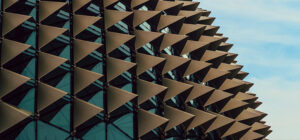
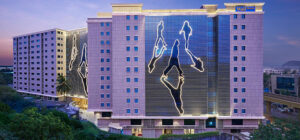
Integrating Technologies into Constructive Façade Management
The façade is one of the most important contributors to any building's energy use and comfort parameters. In order to provide occupants with a comfortable environment, a façade must fulfil many functions, such as providing views to the outside, resisting wind loads, supporting its own dead load weight, allowing daylight to interior spaces, blocking unwanted solar heat gain, protecting occupants from outside noise and temperature extremes, and resisting air and water penetration. The highly glazed façade has become an important component today. The common use of glass in building envelopes has greatly fascinated the 'green building' and construction designers and owners. However, most of those buildings have an intense reflection or use overly reflected glass and face severe internal comfort challenges. Only robust HVAC systems can solve this, resulting in substantial capacity, costs and environmental penalties. The future façades will be much more interactive, environmentally friendly and design innovative. Integrating...
Posted on: 01 Sep 2020
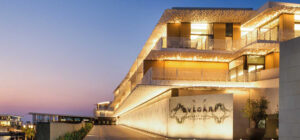
Façade & Fenestration Industry: Innovations, Challenges & Way Forward
Façade and fenestration industry is a technology-driven industry and innovations keep on happening in this industry. In today’s time, making sustainable buildings is the topmost trend in the construction segment, which is increasing the demand for sustainable and environmentally-friendly façade & fenestration solutions and technologies. Automation is another trend that has revolutionised the façade & fenestration industry. Being one of the largest industries in the Middle East, façade & fenestration industry offers huge opportunities as well as more challenges. The COVID-19 breakdown has brought a tough time for the construction industry, which had a direct effect on the façade & fenestration segment. But, it has also opened a door for innovations to make the buildings hygienic. Automation can play a vital role in achieving the hygienic aspect. In this cover story, we interviewed eminent personalities from the industry and presented their thoughts to know about the important trends, current challenges,...
Posted on: 17 Aug 2020
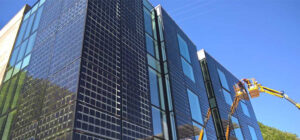
Photovoltaic Glass: Solutions to Make the World a Greener Place
Photovoltaic Glass Building-integrated photovoltaics (BIPV) are photovoltaic materials that are used to replace conventional building materials in parts of the building envelope such as the roof, skylights, or façades. They are increasingly being incorporated into the construction of new buildings as a principal or ancillary source of electrical power, although existing buildings may be retrofitted with similar technology. The advantage of integrated photovoltaics over more common non-integrated systems is that the initial cost can be offset by reducing the amount spent on building materials and labour that would normally be used to construct the part of the building that the BIPV modules replace. These advantages make BIPV one of the fastest-growing segments of the photovoltaic industry. The term building applied photovoltaics (BAPV) is sometimes used to refer to photovoltaics that is a retrofit – integrated into the building after construction is complete. Most building-integrated installations are BAPV. Some manufacturers and...
Posted on: 04 Aug 2020

Webinar on “Designing and Building High-Rise & Ventilated Rainscreen Façades”
We at WFM Media organised our first webinar for the Middle East region on 7th July 2020 on “Designing and Building High-Rise & Ventilated Rainscreen Façades”. This webinar, powered by Fischer Middle East, saw a large number of interactive participants and caught the attention of the industry members, architects, façade consultants, contractors, builders, developers, etc. We received more than 1000 registrations. The idea behind organising such webinars is to create awareness about issues that are relevant to the field of façade & fenestration and also help the companies to disseminate their knowledge and to showcase their products. The webinar was hosted by Amit Malhotra and Ahad Ahmed, Co-founders of F&F Media and Publications Below are the topics and a detailed introduction to the speakers: [caption id="attachment_40850" align="alignleft" width="150"] Agnes Koltay Director & CEO, Koltay Façades[/caption] Agnes Koltay mentioned that the main difference between the high-rise and low-rise buildings is the...
Posted on: 04 Aug 2020
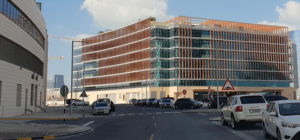
“Coming up with the Best Solution at the Most Feasible Price is Always a Challenge”
What are the key parameters you while designing a façade? Designing a façade starts at the concept stage where we study the project’s function, aesthetics, location and surroundings. Those aspects comprise the key parameters, which we consider throughout the design process. So, if we consider the function, for example, we notice that designing a façade for residential, office or mixed use has a great impact on the project image and façade. This is mixed with the aesthetic intent which is an important driver. So, while many projects tend to blend in with the surrounding fabric, other buildings, especially the public ones like museums or airports compete to be unique and stand out. In addition to visual, the aesthetic design intent, the location and the surroundings will affect the technical aspects we consider such as the climatic treatments, noise reduction and privacy requirements. This guides us to map out all the...
Posted on: 10 Jun 2020
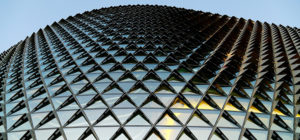
Benefits of Performance Glass in Modern Façades & Fenestration
Performance glass is a glass that provides benefits to its end users (building occupants). The glass helps in achieving benefits for the structure like reduced HVAC loads and light comforts. The need to have different types of glass on façades arises due to many factors such as local climatic condition, external wind pressure, building occupancy type, building geometry, area of application etc. Energy Efficiency not only plays an important role in society but also plays an important role in shaping the future. While choosing performance glass, two aspects are to be taken care of by the occupants: a) Optimise light to reduce the need for artificial light b) Cut down the heat inside building to reduce the load on air conditioning The selection of the right type of performance glass for the building envelope is critical for building efficiency point of view. We continuously work to create new glass products...
Posted on: 06 May 2020
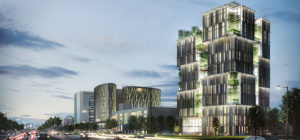
Glass & Glazing Technologies Increasing Efficiency of Building Systems
One of the most prominent trends in the last few years in real estate has been the usage of glass façades. Most of the iconic buildings in Indian metros today are elegant corporate houses with glass façades. Today, glass façades have become an industry with several companies offering a plethora of choices in everything from supplying different glass to customisation, cleaning and maintenance. The reason for architects' and developers' preference for glass is because it reduces the weight on the foundation and hence makes the building lighter as compared to constructing walls. Structurally glazed façade systems create greater transparency than traditional captured systems. There are fewer visual interruptions due to the use of less metal on the glass façades, creating a seamless, continuous transparent look, merging the interiors with the exterior. Since there is little to no exposed exterior metal, there is also less thermal bridging with structural glazing, saving...
Posted on: 29 Apr 2020
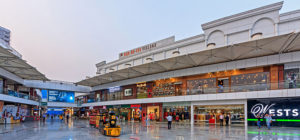
“Glass has Revolutionised the Façade Industry”
In an interesting conversation with WFM, Ar. Mitu Mathur talks about her practice, their latest projects, the evolution of façade and cladding technology and trends in India and many key factors to consider while designing and choosing materials for façades. Here are the excerpts from the interview. Could you please tell about your practice and your firm's journey? [caption id="attachment_38484" align="alignleft" width="500"] National Institute of Design, Bhopal[/caption] Architecture is not just a profession, but a passion that drives our family. Me and my sister are third-generation architects. Our father, Gian P. Mathur started the practice 40 years ago and since then we have been blessed with opportunities and embraced all new kinds of projects that are being introduced in the industry over the decades. When my father started the practice, our firm did a number of prominent, particularly industrial projects. With the onset of commercialisation, we ventured into a variety...
Posted on: 20 Apr 2020
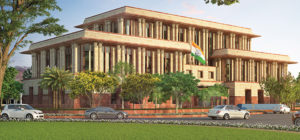
Always Relate Buildings to the Context
In a candid conversation with WFM, Ar. Anand Sharma, one of the founding partners at DFI, gave an insight into DFI as a practice, its design approach and projects. He pushed energy efficient factors to be considered while designing building façades and fenestrations into the spotlight, which support design driven interventions and improve users’ experience. Here are the excerpts from our conversation. Please tell us about your Practice? Select Citywalk Mall ,Saket , New Delhi After studying together and graduating from IIT Kharagpur in 1995, we started an architectural practice as collaboration and turned into partners from co-peers. Completing 25 years of our practice together with our team of professionals, we have had lifetime opportunities of working on projects reverend to the urban context and architecture of India. Our journey started with small scale residential and retail projects, and since then, our team has worked tirelessly in the spirit of...
Posted on: 24 Feb 2020
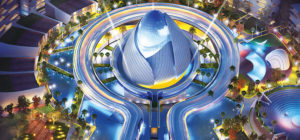
Façade Lighting Creating Distinct Landmarks
A building’s façade is an expressive feature. Perhaps the only visible design element to the non-inhabitants is the façade. Creatively illuminated building façades convey messages, communicate emotions, create attention and facilitate orientation. Moreover, modern lighting solutions for building façades add value to the architectural or economic merit by making a location more prominent, beautiful and safer. Achieving the status of ‘iconic and attractive nightscapes’ demands great aesthetic design sensibility. Lighting solutions also need to be sustainable, save resources and prevent unnecessary light pollution. A building is in constant dialogue with its ecosystem, and for it to be sustainable, an efficient system of façade lighting is imperative. Saving energy is an omnipresent challenge. Façade lighting must, therefore, get to grips with ecological compatibility issues. Night View Of Raipur Airport Designed by Creative Group The number of buildings that have illuminated façades is increasing sharply. Because of architectural, societal and technological changes,...
Posted on: 14 Nov 2019
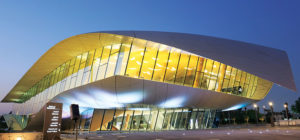
Glass Facade – A Boon for the Fenestration Industry
Glass is one of the oldest and most popular material in building construction. Over the years, it has emerged as one of the widely used facade materials around the world. Glass when used as a facade material, makes the building look more beautiful. One of the most important benefits of glass is that it allows natural light to enter the building, thus saving the electricity costs. Glass Facade also offers extraordinary flexibility, which makes it the most preferred choice amongst the architects, builders and consultants. In this Article, the experts have given their opinions on how glass is revolutionizing the building industry in the Middle East. Through this article, you will also get to know about the new technological trends in the glass facade and how they benefit the buildings in the region. Demand for glass facades in Building Envelope Over the centuries, the glass has evolved dramatically. For years,...
Posted on: 26 Sep 2019
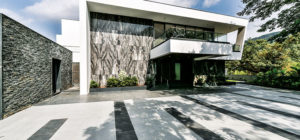
Effective – Exterior Wall Cladding
Cladding is an exterior finishing system a skin to a skin or an additional non-load-bearing layer that serves a dual purpose. It not only helps protect the interiors of the building from harsh weather elements but also makes the outside decorative and attractive. The right cladding helps to maintain the buildings weather-tight and cost-effective, at the same time providing thermal insulation, reducing the temperature variation inside the building. It also helps to improve interior acoustics and daylighting. The cladding can influence the value, sale-ability and safety of the building. So cladding your property effectively is a wise investment that pays both short and longer-term dividends. There are now more cladding systems in the market than ever before. Finding the most appropriate choice may take a little time, but cladding – used creatively and intelligently – is a great way to stamp your own personal style on a property. Ready to...
Posted on: 05 Jun 2019

Latest News of the Facade and Fenestration Industry
Japanese Architect Arata Isozaki Wins the 2019 Pritzker Arata Isozaki – a Japanese architect and planner has been awarded the 2019 Pritzker Architecture Prize. Born in 1931, Isozaki was deeply influenced by the aftermath of World War II and the destruction of his hometown of Ōita, after which he became fascinated by the temporal nature of the built environment. [caption id="attachment_31751" align="alignleft" width="250"] Arata Isozaki[/caption] Isozaki graduated from the Department of Architecture at the University of Tokyo in 1954 and began his career with an apprenticeship under the guidance of 1987 Pritzker Prize Laureate Kenzo Tange. He established Arata Isozaki & Associates in 1963. “Isozaki is a pioneer in understanding that the need for architecture is both global and local - that those two forces are part of a single challenge,” wrote Supreme Court Justice Stephen Breyer, Jury Chair in a statement. “For many years, he has been trying...
Posted on: 04 Jun 2019
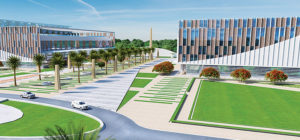
Our Mission is Defined In ” Live by Design “
Established in 1981, Sikka Associates Architects (SAA) is recognised as an important architectural practice in our country, not only for its rich and varied projects but for its rapid growth over recent decades and the unique design solutions it continues to provide. Raman Sikka is an Associate Principal in Sikka Associates. He graduated from SPA Delhi in the year 1991 and joined AD Consortium in Singapore as a Design Architect. He later worked with Sachdeva Eggleston and Associates, then with S. Ghosh and Associates as an architect, and finally joined his father S.R Sikka in his practice in the year 1993.laAr. Raman Sikka holds design expertise in varied context and geographies and has delivered successful projects across a variety of sectors from concept to completion. He has also obtained a Masters in Management and often interacts with students of SPA Delhi as a guest jury member.Team WFM had the pleasure...
Posted on: 30 May 2019
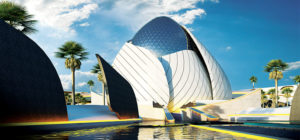
The Glass Age
The production of window glass started in 1836 in a factory in Belgium. Since then, the product has come a long way. Glass has become an inevitable part of any urban building. One of the first milestones was the invention of tempered glass in 1929 by the French glass company Saint-Gobain. The first double glazing was produced in 1947 in Belgium, and it became popular due to its insulation capacities, both thermal and acoustic. During the 1950s, the British manufacturer, Pilkington invented a new method of glass production called float process and since then float glass has become the rage. By the end of the 20th century, 90% of the flat glass used throughout the world were float glass. Enameled and tinted glass followed this. [caption id="attachment_31416" align="alignright" width="150"] ANSHU SHUKLA Deputy General Manager – Design, Kalpataru Ltd.[/caption] With the material science constantly pushing its boundaries, we saw the entry...
Posted on: 29 May 2019

